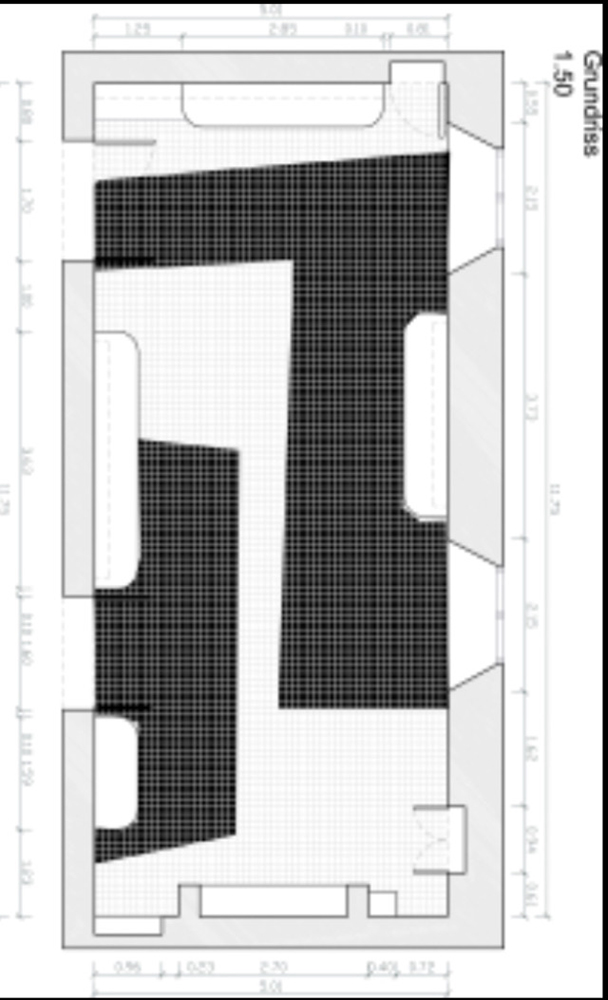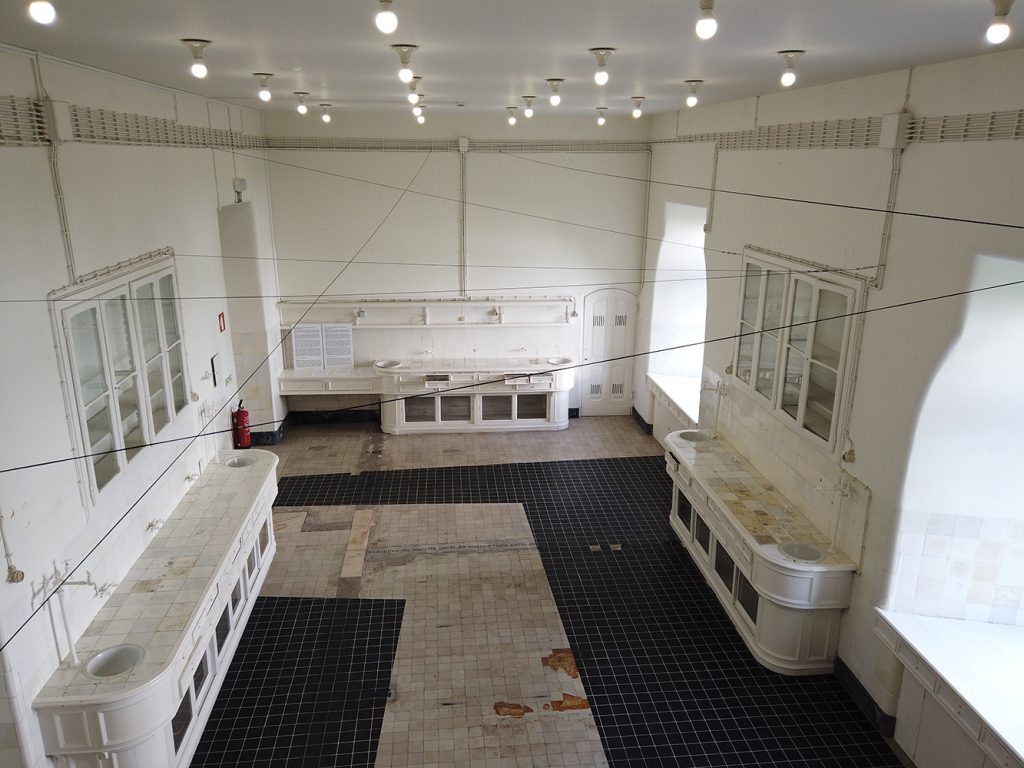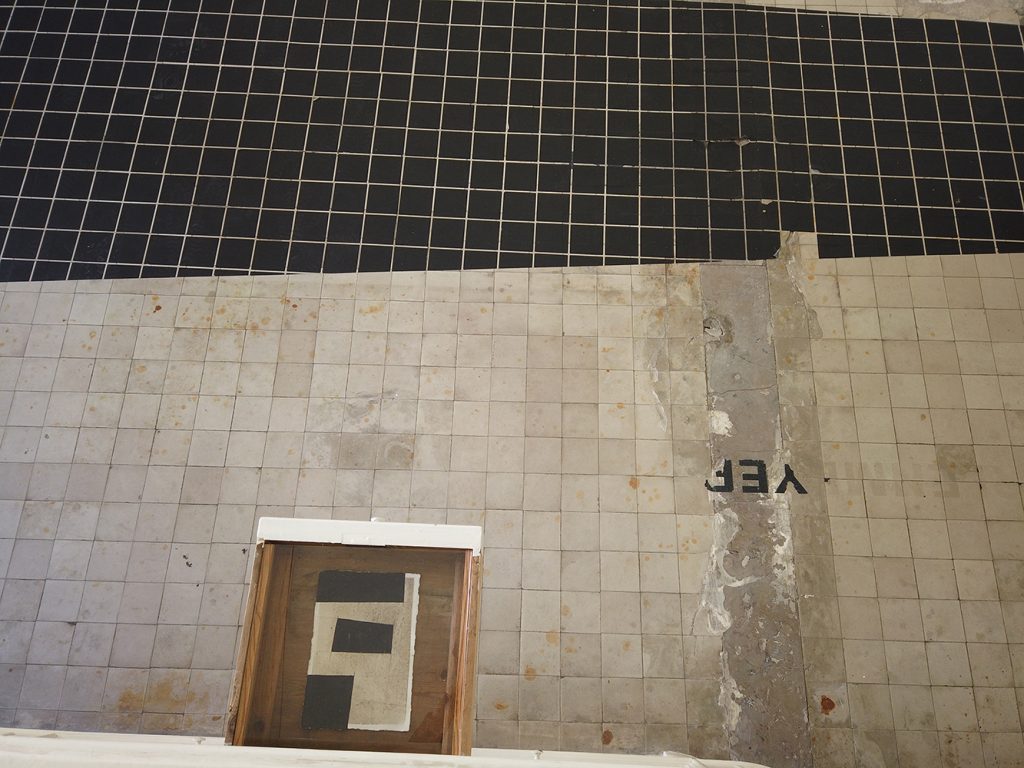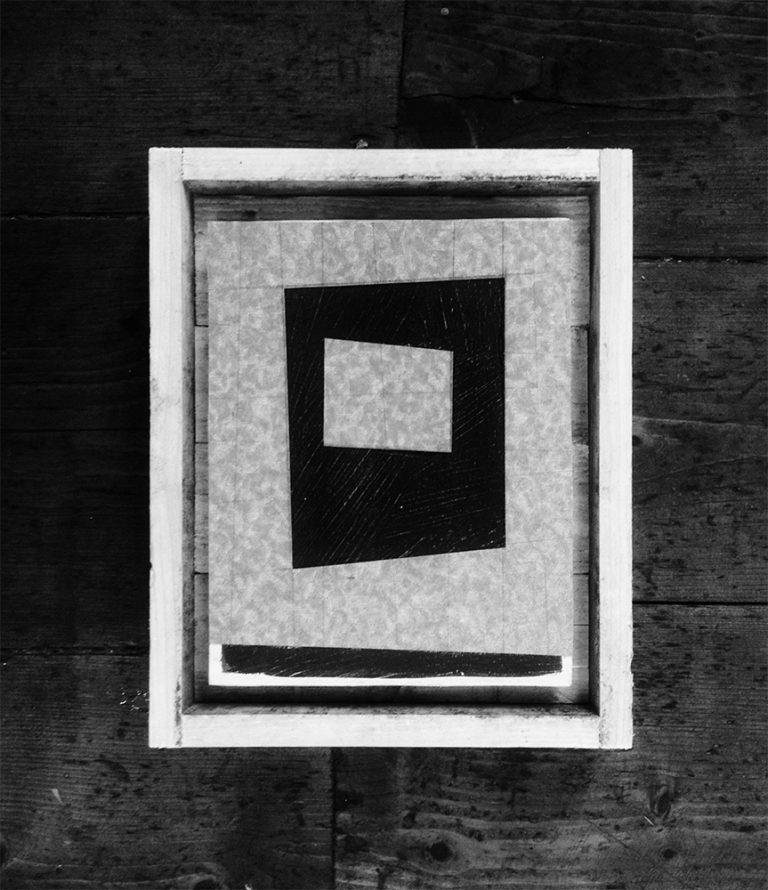Exhibition Proposal for the Museum of Natural History and Science in Lisbon, Portugal
The solo show of Gustavo Mendez-Liska consists of the site-specific installation in the exhibition space on the ground floor and presentation of the selection from the artist´s oeuvre in the first floor.
The site-specific installation consists of:
- black stickers on the floor 10x10cm, that mimic the tiled structure of the floor and simultaneously create the new geometrical pattern
- a net-like construction consisting of the textile threads above the head level — a grid
- original drawings of the artist stored in the drawers, that are of the same structure as the installation, but in 2D
- a stone from the collection of the museum, exhibited in the showcase
The installation brings literally the 2D drawings into the real, 3D space. In his drawings, Mendez-Liska is fascinated by the interplay of the forms and the spaces between them, that create their own visual language.
Apart from geometrical forms, Mendez-Liska uses the grid to delineate the imaginary space. The grid is a form/structural element of rationalization of spatial relationships in art and architecture since centuries. The artist makes it a central point in his installation for the museum of natural history, where the rationalization – in taxonomy and all possible hierarchies reached its peak and one cannot escape the classifications and overall order of things.
The artist comes back to the naturalia and Portuguese milieu in details of the installation, such as the placement of the stone from the museum collection prominently to the main showcase of the space. In his drawings, Mendez-Liska mixes natural pigments with ashes. In the installation on the ground, he will not cover the structure of tiles, but he tries to emphasize it as a culture-specific architectonical element.
The selection of the works for the first floor would be further discussed with Mrs. Marcal.
Tectonic experiences and spatial relations in the artworks of Gustavo Mendez-Liska
Throughout the years of his artistic practice, Gustavo Mendez-Liska has gradually reduced his means of expression to basic geometrical forms. That is how he can deliberately convey his fascination with the tectonic experiences – with the structures of all kinds, their interplay, and tensions.
The diasporic background of the artist has undoubtedly a great impact on his searching for the geometrical forms, which come to him as a part of the universal language. At the same time, he is aware of their particularity concerning different cultural backgrounds and sensibilities. He focuses his attention on the gaps and niches, on the things, that remain unsaid, on the pause or breathing in in-between the composition. Such structural experiences are in general common for everyone.
At first sight, his compositions on paper remind of the architectural sketches. The architecture of the city, its spatial relations in the matter and its lack, the play of light and shadow between them, were, in fact, a crucial starting point of Mendez-Liskaʼs dealing with the tectonics of the (spatial) experience. However, while looking at his latest series, as well as artist´s oeuvre as such, one cannot oversee the overlaps with the forms and structures, that can be found in the musical scores or visual poetry as well. Such reading opens the further levels of the multilayered experience, which although it is exclusively visual, remains definitely not quiet.
Moreover, his drawings are often one of the stages for the further development of his sculptural artworks. By the latter, he prefers to use natural materials, prevalently wood and natural pigments. The natural structure of the wood with all its imperfections and scratches becomes a pattern, an aesthetical quality, that simultaneously refers to the history of the region from which the material came from. The pigments that he uses for his paintings, as well as for the objects he creates, bear a certain reference to the Austrian milieu. The yellowishness of the carpenter’s white that he uses in his series Viennese delicacies (Wiener Schmankerln) and Windows (Ventanas) is such case, that oscillates between homage and inner joke of the artist, who became a trained carpenter as well.
Miroslava Urbanova, Vienna 2018
Gustavo Mendez-Liska is a Venezuelan artist, who lives and works since 1991 in Vienna. He develops his artistic practice within the lineage of concrete and neo-concrete art, that has its roots in Southern America, particularly in Brazil. where he presented his works in 2009. A part of his family moved to Portugal that fascinates the artist for years with its liveliness and its nature. Mendez-Liska is one of the artists, that bring to Europe the heritage of the concrete and neoconcrete art. He works predominantly with wood and waste material, fascinated by its structure and poetics of its visual language.




















